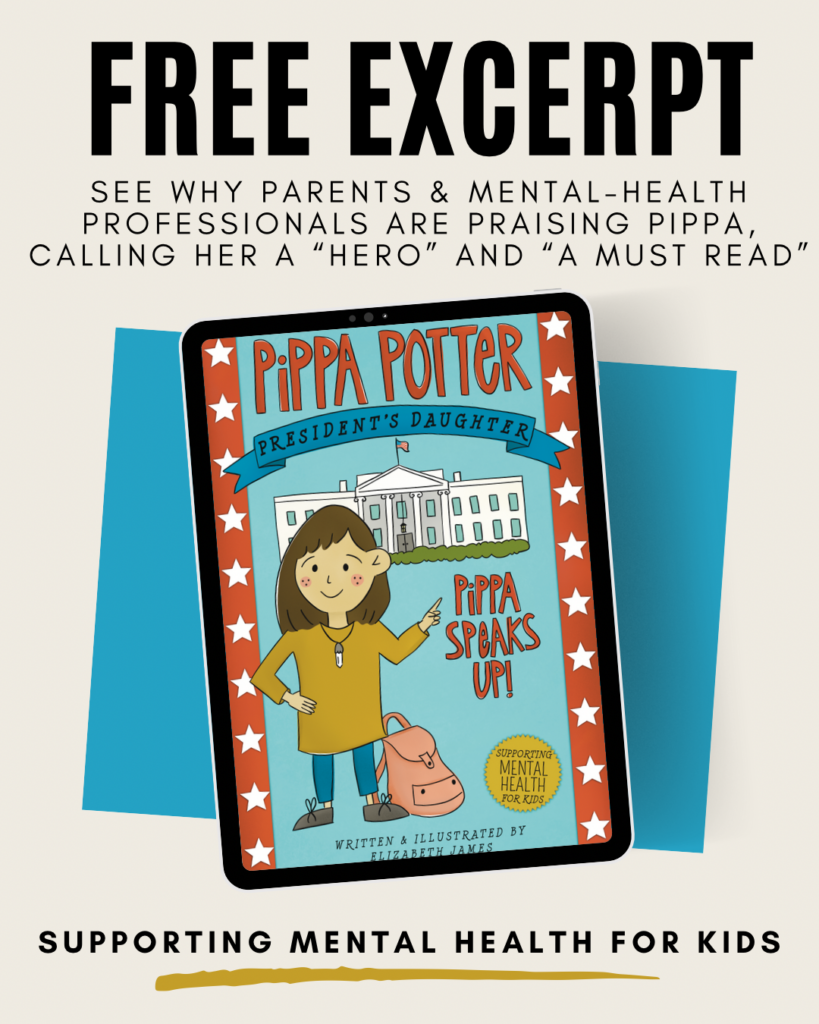How Anxiety in the Brain Affects Boys and Girls Differently: What Parents Need to Know From a New Study
Did you know that anxiety affects boys and girls differently? That’s what a new study in the American Journal of Psychiatry has now revealed: Anxiety affects the brains of boys and girls differently, especially in their white matter.
As parents, this is especially helpful so that we can better learn to recognize anxiety in our own kids! Especially given that anxiety disorders are among the most common psychiatric disorders in children. So much so that the American Academy of Pediatrics declared the mental health crisis among children and teens a national emergency, and depression and anxiety are one of the biggest concerns parents have for their children, according to a Pew Research Center survey.
(By the way, that’s also why I wrote my anxiety book for kids, Pippa Speaks Up!: As a parent, I saw the need for kids to be equipped with proven anxiety-relief strategies. So I wove them into a captivating story of a girl who’s mom has been elected President of the United States and she’s now living in the White House. But when she’s forced to give a class speech, her anxieties spiral, causing her to be sick to her stomach. That’s when she learns kid-friendly, mental-health tools including mindfulness, deep breathing and more to face her anxieties and embrace the power of speaking up. Find out more about this children’s book about anxiety here.)
About the study and its findings
The researchers, led by Nakul Aggarwal from the University of Wisconsin-Madison, wanted to understand how anxiety disorders might be linked to changes in the brain’s structure because he saw that current treatment options are often “suboptimal.” This means that even with treatment, many kids fail to respond or relapse after treatment. He wanted to find out why—so he decided to study kids’ brains to see if that could unlock any insights that might help future treatment strategies.
The study looked at brain scans of 295 kids aged 8 to 12. Some had anxiety disorders, while others were healthy. They used a type of brain scan called diffusion tensor imaging (DTI) to look at the brain’s wiring. That’s when they found that anxiety in the brain affects boys and girls differently.
Here’s what they found: Boys with anxiety showed changes in certain brain areas, particularly in a part of the brain that helps regulate emotions. However, these same changes were not seen in girls with anxiety. The researchers were evens surprised by this finding!
Aggarwal explained, “This finding is exciting because it suggests that improving white matter structure (including the fatty insulation around brain cells) might represent a novel treatment target for childhood anxiety. Taken together with prior work showing that white matter is modifiable and responsive to pharmacological and environmental interventions, this work paves the way for further studies exploring the therapeutic potential of targeting white matter in new treatment strategies to help children with anxiety disorders.”
Helping our kids in the future
What does this mean for parents? Well, it suggests that when it comes to anxiety, boys and girls might need different kinds of support and treatment. The study hints that tweaking the brain’s wiring might be a new way to tackle childhood anxiety. Fortunately, we know that the brain’s wiring isn’t set in stone; it can change, especially with certain therapies.
But, of course, there are still some unknowns. The study doesn’t tell us everything, and there could be more going on with girls’ brains that we haven’t quite figured out yet. That’s why researchers plan to dig into this subject even more in ways that will help boys and girls—and help ease childhood anxiety.
In the meantime, a great tool for parents is to consider reading Pippa Speaks Up! with your child. You can download a free excerpt of the book here, and also get access to all kinds of FREE worksheets and activities, including free anxiety worksheets for kids.

